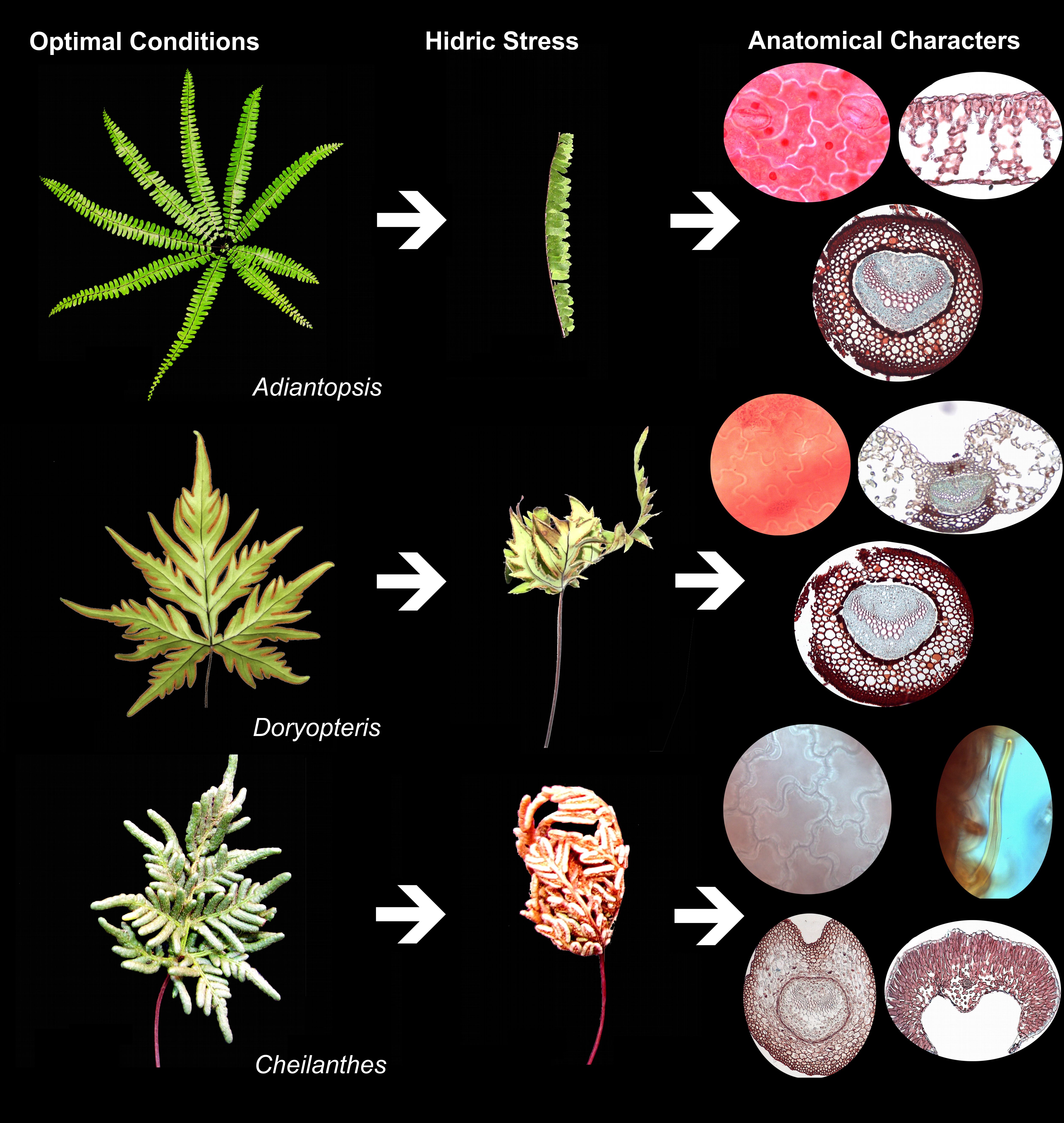Comparative anatomy in four Cheilanthoid ferns
DOI:
https://doi.org/10.31055/1851.2372.v54.n2.24365Keywords:
Adiantopsis, anatomy, Doryopteris, Cheilanthes, mesophyll, petioleAbstract
Background and Aims: Some species of Cheilanthoid ferns are characterized by show adaptations to xeric habitats. Furthermore, presents the peculiarity of the roll their blades under drought stress and when conditions are optimal they expand again. The aims of this work are provide morpho-anatomical information of the leaves and relate with the environmental conditions in which grow.
M&M: The fronds’ morpho-anatomy of four species (Adiantopsis radiata, Cheilanthes glauca, Doryopteris concolor and D. pentagona) were analyzed through light microscopy and Scanning electron microscopy. Also, the stomatal density and stomatal index were obtained.
Results: Homogenous mesophyll was observed in A. radiate and D. pentagona. Cheilanthes glauca and Doryopteris concolor showed dorsiventral heterogeneous mesophyll. All species studied showed hypostomatic leaf, with anomocytic stomata. The stomatal index observed was between 9.1% (A. radiata) and 14.1% (D. concolor), and the range of stomata density varied between 39.7 (D.pentagona) and 57.8 (D. concolor).
Conclusions: The mesophyll observed in A. radiata, and D. pentagona responds to a mesophytic environment. Doryopteris concolor was reported as a facultative epiphyte, and its dorsiventral heterogeneous mesophyll would be an advantage in this habitat. Cheilanthes glauca has xeromorphic and mesomorphic features, probably resulting from water availability during the different seasons. We porpose as hypothesis that the thickening of the anticlinal walls of epidermal cells could be involved in the leaf movements."

Downloads
Published
Issue
Section
License
Provides immediate and free OPEN ACCESS to its content under the principle of making research freely available to the public, which fosters a greater exchange of global knowledge, allowing authors to maintain their copyright without restrictions.
Material published in Bol. Soc. Argent. Bot. is distributed under a Creative Commons Attribution-NonCommercial-ShareAlike 4.0 International license.




